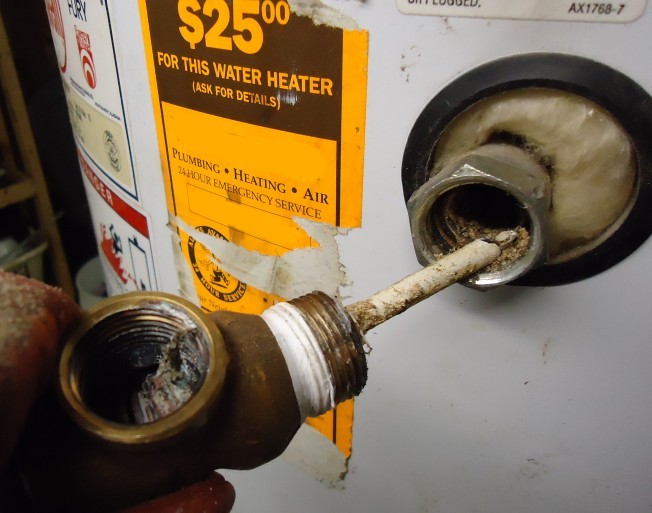Easy Guide to Maintaining Your Home's Hot Water System
Easy Guide to Maintaining Your Home's Hot Water System
Blog Article
The content listed below involving Tips For Maintaining Your Hot Water Heater is extremely intriguing. Don't bypass it.

Hot water is necessary for daily convenience, whether it's for a rejuvenating shower or cleaning meals. To guarantee your hot water system runs successfully and lasts longer, regular maintenance is crucial. This write-up offers practical ideas and insights on just how to maintain your home's warm water system to prevent disturbances and costly repair work.
Intro
Keeping your home's hot water system may seem overwhelming, but with a few straightforward steps, you can guarantee it operates smoothly for many years ahead. This overview covers everything from understanding your hot water system to do it yourself upkeep suggestions and understanding when to call professional help.
Significance of Preserving Your Warm Water System
Normal maintenance not only prolongs the life expectancy of your warm water system yet additionally guarantees it runs effectively. Ignoring upkeep can cause lowered performance, greater power costs, and even premature failure of the system.
Signs Your Hot Water System Needs Maintenance
Knowing when your hot water system needs focus can protect against significant concerns. Keep an eye out for indicators such as irregular water temperature level, strange noises from the heater, or rusty water.
Flushing the Hot Water Heater
Purging your hot water heater eliminates debris build-up, boosting effectiveness and extending its life.
Checking and Replacing Anode Rods
Anode rods protect against corrosion inside the tank. Inspecting and changing them when broken is vital.
Complicated Problems Requiring Expert Help
Examples consist of significant leaks, electrical troubles, or if your hot water heater is constantly underperforming.
Regular Professional Maintenance Conveniences
Expert maintenance can include comprehensive inspections, tune-ups, and ensuring conformity with security standards.
Evaluating and Changing Temperature Settings
Readjusting the temperature settings makes certain ideal performance and safety and security.
DIY Tips for Maintenance
You can execute a number of maintenance jobs yourself to maintain your hot water system in leading problem.
Checking for Leakages
On a regular basis examine pipelines and connections for leakages, as these can result in water damages and greater expenses.
Recognizing Your Hot Water System
Prior to diving into upkeep tasks, it's useful to recognize the fundamental parts of your hot water system. Typically, this includes the hot water heater itself, pipes, anode rods, and temperature level controls.
Monthly Maintenance Tasks
Normal monthly checks can assist capture minor issues before they rise.
Evaluating Stress Alleviation Valves
Checking the pressure relief valve ensures it functions appropriately and prevents excessive pressure accumulation.
Shielding Pipes
Shielding hot water pipelines minimizes warmth loss and can conserve energy.
When to Call an Expert
While DIY upkeep is advantageous, some issues require professional knowledge.
Verdict
Normal maintenance of your home's hot water system is crucial for efficiency, durability, and price savings. By complying with these pointers and recognizing when to seek expert assistance, you can make certain a dependable supply of hot water without unanticipated disruptions.
How to Maintain an Instant Hot Water Heater
Before tinkering with your hot water heater, make sure that it’s not powered on. You also have to turn off the main circuit breaker and shut off the main gas line to prevent accidents. Also turn off the water valves connected to your unit to prevent water from flowing into and out of the appliance. 2. When you’re done, you have to detach the purge valves’ caps. These look like the letter “T†and are situated on either side of the water valves. Doing so will release any pressure that has accumulated inside the valves while at the same time avoid hot water from shooting out and burning your skin. 3. When the purge valves’ caps are removed, you have to connect your hosing lines to the valves. Your unit should have come with three hoses but if it didn’t, you can purchase these things from any hardware or home repair shops. You can also get them from retail stores that sell water heating systems. Read the user’s manual and follow it to complete this task properly. When the hosing lines are connected, open the purge port’s valves. 4. You should never use harsh chemical cleaners or solutions when cleaning your unit. Make use of white vinegar instead. It should be undiluted and you’ll probably use about 2 gallons. 5. Now flush your water heater. This task should probably take about 40 minutes. We can’t give you specific directions for this because the procedure is carried out depending on the type, model and brand of your heater. With that being said, refer to the user’s manual. 6. When you’re done draining the unit, you have to turn off the purge port valves again. Remove the hosing lines that you earlier installed on each of the water valves. Put the valve caps (purge port) back in their respective places and be very careful so as not to damage the rubber discs that are found inside these caps. 7. Now that everything’s back in place, check your user’s manual again to find out how to reactivate your water heating system. 8. Once it is working, turn one of your hot water faucets on just to let air pass through the heater’s water supply pipes. Leave the tap on until water flows smoothly out of it. https://www.orrplumbing.com/blog/2014/september/how-to-maintain-an-instant-hot-water-heater/

Do you like reading up on Tips on Maintaining a Water Heater? Put a comment directly below. We will be delighted to know your reactions about this blog post. Hoping that you visit us again in the future. You should take a moment to distribute this blog if you liked it. Thank-you for your time spent reading it.
Recurring Service Plans Report this page